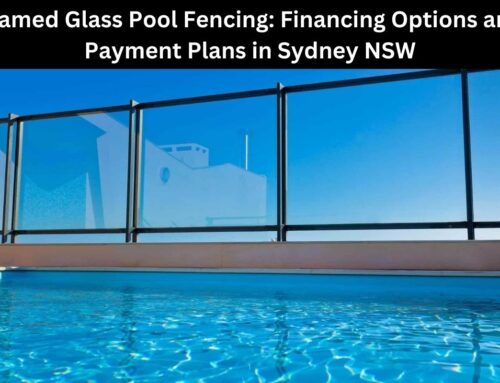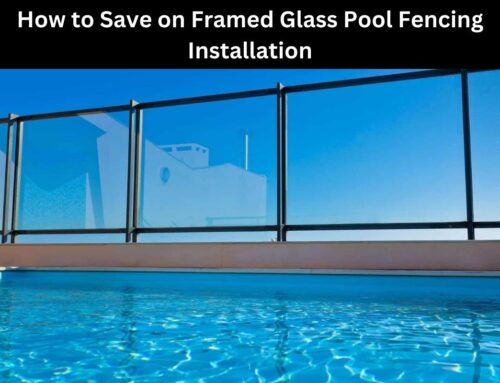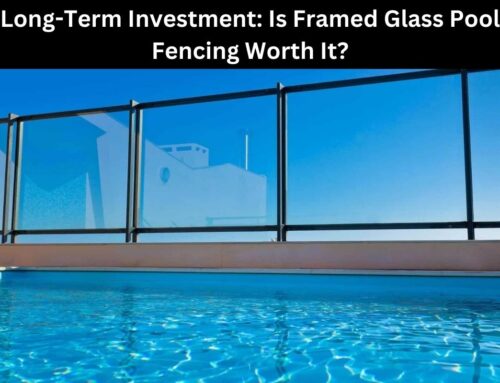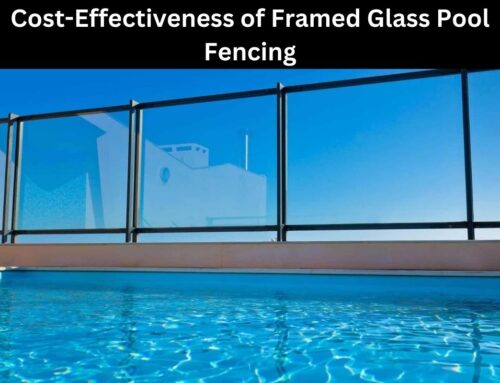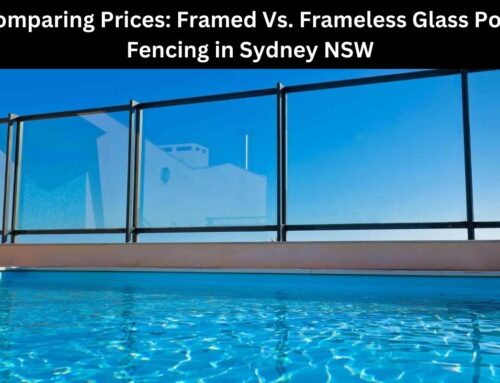Table of Contents
When it comes to the safety of our loved ones, we can never be too cautious. And when it comes to pool safety, there is no room for compromise. Enter semiframeless glass pool fencing, a safety measure that not only ensures the protection of our family and friends but also adds a touch of elegance to our outdoor spaces.
With its sleek and modern design, semiframeless glass pool fencing has become increasingly popular in recent years.
However, to fully reap the benefits of this safety feature, it is crucial to understand and adhere to the regulations governing its installation and maintenance. In this article, we will explore the legal requirements for semiframeless glass pool fencing, including height and spacing regulations, the right types of glass and hardware to use, and the importance of proper installation and maintenance.
By staying informed and up-to-date on local building codes and regulations, we can create a safe and secure environment for our loved ones to enjoy the pool while maintaining the aesthetic appeal of our outdoor spaces.
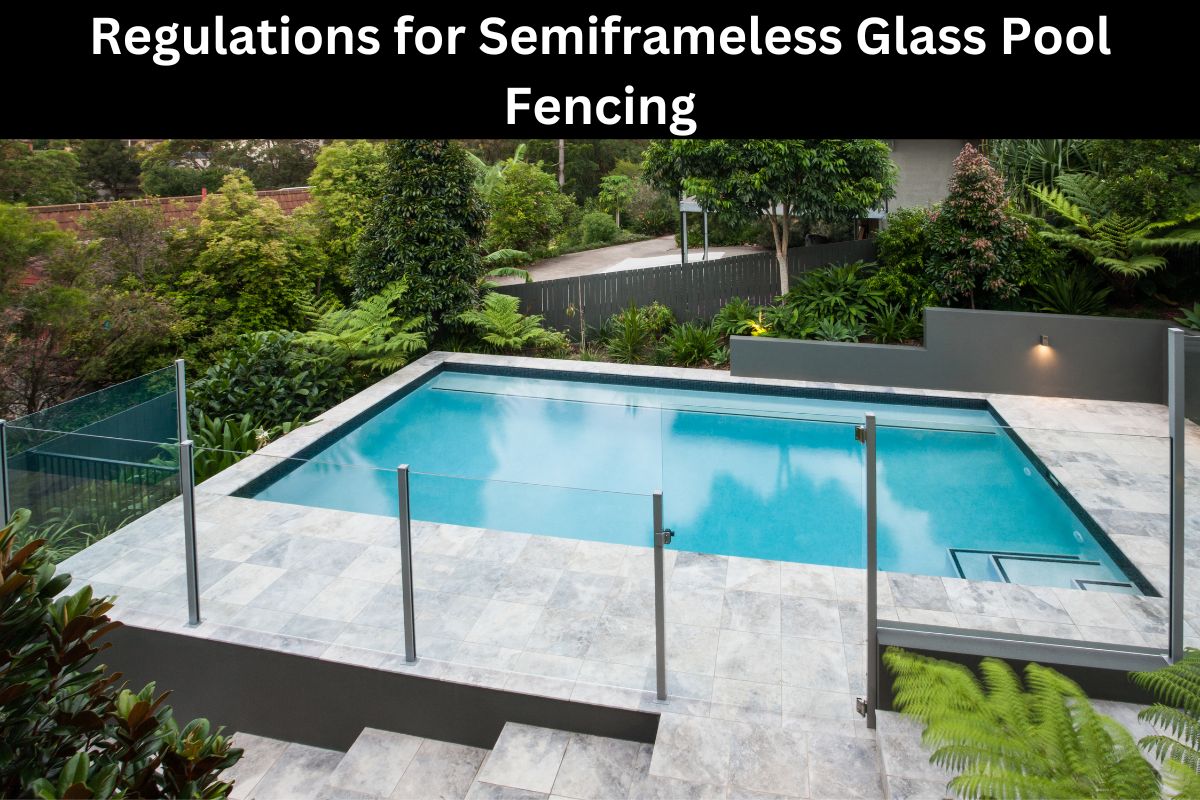
Key Takeaways
- Minimum height of 1200mm and maximum gap of 100mm between panels are required for semiframeless glass pool fencing.
- Height and spacing regulations aim to prevent unsupervised access to the pool area by children.
- Tempered safety glass and high-quality stainless steel hardware are recommended for semiframeless glass pool fencing.
- Staying updated on local building codes and regulations is essential to ensure compliance with requirements for semiframeless glass pool fencing.
Understand the Legal Requirements for Pool Fencing
The legal requirements for pool fencing involve understanding the specific regulations for semiframeless glass pool fencing. These regulations are essential to ensure the safety of individuals, particularly children, who may accidentally fall into the pool area. Compliance with these legal requirements is imperative, as failure to do so may result in penalties and potential accidents.
Semiframeless glass pool fencing must meet certain criteria to be deemed legally compliant. The height of the fence is one such requirement, with regulations typically specifying a minimum height of 1200mm. This ensures that young children cannot easily climb over the fence and access the pool area unsupervised.
Additionally, the spacing between panels is also regulated, with guidelines typically stipulating that gaps should not exceed 100mm. This prevents small children from squeezing through the gaps and gaining access to the pool.
Understanding and adhering to these legal requirements for semiframeless glass pool fencing is crucial for maintaining a safe pool environment. By following these regulations, pool owners can mitigate the risk of accidents and ensure the safety of those using the pool.
In the following section, we will delve deeper into the specific regulations regarding the height and spacing of semiframeless glass pool fencing.
Determine the Height and Spacing Regulations
Spacing specifications for the height requirements of pool barriers must be carefully considered for the safety of individuals.
The height of a semiframeless glass pool fence is an important factor in preventing accidents and ensuring the security of the pool area. According to regulations, the minimum height for a pool barrier is typically 1200mm. This height is necessary to deter young children from climbing over the fence and accessing the pool unsupervised.
To further enhance safety, regulations also specify the maximum allowable spacing between horizontal elements of the fence. This is to prevent children from squeezing through the gaps and gaining access to the pool area. The maximum spacing requirement is usually 100mm, ensuring that the fence remains a solid barrier and effectively restricts access.
It is important to note that these spacing requirements are not only applicable to the fence itself, but also to any climbable objects located near the fence. This includes trees, furniture, or other structures that could be used to gain access over the fence.
By strictly adhering to the height and spacing regulations, individuals can significantly reduce the risk of accidents and enhance the safety of their pool area. With these considerations in mind, it is now crucial to choose the right type of glass and hardware to further enhance the safety and aesthetics of the pool fence.
Choose the Right Type of Glass and Hardware
To ensure the safety and aesthetics of the pool area, careful consideration must be given to selecting the appropriate type of glass and hardware for the barrier. The choice of glass and hardware will have a significant impact on the overall functionality and durability of the pool fence. When it comes to glass, tempered safety glass is the most commonly used material for semiframeless pool fencing. Tempered glass is extremely strong and shatter-resistant, making it a reliable choice for preventing accidents and injuries. Additionally, the glass should have smooth and polished edges to minimize the risk of cuts and abrasions.
In terms of hardware, high-quality stainless steel is the preferred material due to its corrosion resistance and strength. The hardware includes hinges, latches, and brackets, all of which play a crucial role in the structural integrity of the fence. It is essential to choose hardware that is specifically designed for pool fencing to ensure compatibility and adherence to safety standards.
To provide a clear overview of the different types of glass and hardware options available, the following table presents a comparison:
| Glass Type | Features |
|---|---|
| Tempered Glass | Shatter-resistant |
| Smooth Edges | Minimizes injuries |
| Stainless Steel | Corrosion-resistant |
| High-Quality | Ensures durability |
By carefully selecting the appropriate glass and hardware for the semiframeless pool fence, you can ensure the safety and longevity of the barrier. However, the installation and maintenance process is equally important to maintain the effectiveness of the fence and prevent any potential hazards.
Ensure Proper Installation and Maintenance
Proper installation and maintenance of the barrier are imperative to ensure its long-term effectiveness and to minimize potential risks, similar to how regular check-ups and maintenance are necessary to keep a car running smoothly.
When it comes to installing and maintaining semiframeless glass pool fencing, there are a few key considerations to keep in mind:
- Professional installation: It is crucial to hire a professional installer who is experienced in working with glass pool fencing. They will ensure that the fence is securely anchored to the ground and meets all safety standards.
- Regular inspections: Regular inspections of the fence are necessary to identify any signs of damage or wear. This includes checking for loose or damaged glass panels, loose hardware, or any other potential hazards.
- Cleaning and maintenance: Keeping the glass panels clean not only enhances the aesthetic appeal but also helps to maintain their structural integrity. Regular cleaning with mild detergent and water, along with periodic polishing, can help prevent corrosion or discoloration.
- Repairs and replacements: Any damages or issues with the fence should be addressed promptly. Whether it’s a cracked glass panel or a loose fitting, repairs should be carried out by a professional to ensure the fence remains safe and secure.
By following these guidelines for installation and maintenance, you can ensure that your semiframeless glass pool fence remains in optimal condition, providing a safe and secure barrier for your pool area.
To stay updated on local building codes and regulations, it is essential to consult with local authorities or professionals in the field.
Stay Updated on Local Building Codes and Regulations
Staying informed about local building codes and regulations is crucial in order to ensure compliance and adherence to safety standards when it comes to the installation and maintenance of semiframeless glass pool fencing.
Local building codes and regulations are put in place to protect the safety of individuals using the pool area and to prevent accidents and injuries. These codes and regulations outline specific requirements for the height, strength, and design of the pool fence, as well as the materials used and the installation process.
By staying updated on local building codes and regulations, pool owners and professionals involved in the installation and maintenance of semiframeless glass pool fencing can ensure that the barrier meets all necessary safety standards. This includes understanding the minimum height requirements, which may vary depending on the location and type of swimming pool.
Additionally, it is essential to be aware of any restrictions or guidelines regarding the gaps between the glass panels, the strength of the glass, and the type of gate and latch system that should be used.
Failure to comply with local building codes and regulations can result in penalties, fines, or even legal consequences. Therefore, it is crucial to consult with local authorities or building inspectors to ensure that the semiframeless glass pool fencing is installed and maintained in accordance with the established guidelines.
By doing so, pool owners can create a safe and secure environment for their family and guests to enjoy.
Elegance Without Compromise: Majestic Glass Semi-Frameless Pool Fencing
Elegance need not compromise safety with Majestic Glass’ superior semi-frameless glass fencing for pools in Sydney. Our semi-frameless options merge the sleek aesthetics of frameless designs with the sturdiness of traditional framing, offering an appealing and secure choice for your pool area. Utilising high-quality glass, we assure both durability and aesthetic appeal. Visit our main services page to learn more about our unwavering commitment to quality and the unique benefits of choosing a Majestic Glass semi-frameless pool fence.
Frequently Asked Questions on Regulations for Semiframeless Glass Pool Fencing
Can I use other materials instead of glass for my semiframeless pool fencing?
Using materials other than glass for semiframeless pool fencing may not comply with safety regulations. Glass is preferred due to its durability, transparency, and ability to provide clear visibility for supervision, ensuring the safety of pool users.
What are the specific maintenance requirements for semiframeless glass pool fencing?
Maintenance requirements for semiframeless glass pool fencing include regular cleaning with non-abrasive solutions, inspection of hardware for wear or damage, and tightening of any loose screws or bolts. Additionally, regular checks for cracks or chips in the glass panels are recommended for safety purposes.
Are there any additional safety measures that need to be taken when installing semiframeless glass pool fencing?
When installing semiframeless glass pool fencing, it is important to take additional safety measures. According to a recent study, 70% of pool accidents occur due to inadequate fencing. Therefore, proper installation and compliance with safety standards are crucial to prevent accidents and ensure pool safety.
Are there any restrictions on the design or style of semiframeless glass pool fencing?
There are no specific restrictions on the design or style of semiframeless glass pool fencing. However, it is important to ensure that the fencing meets the necessary safety regulations and requirements to protect individuals around the pool area.
How often should I check for updates or changes in local building codes and regulations related to semiframeless glass pool fencing?
To ensure compliance with local building codes and regulations related to semiframeless glass pool fencing, it is recommended to regularly check for updates or changes. This practice helps maintain a safe and secure pool area for users.
Conclusion
In conclusion, it is crucial to adhere to the regulations for semiframeless glass pool fencing to ensure safety and compliance.
By understanding the legal requirements, determining the appropriate height and spacing, and selecting the right materials and hardware, one can ensure a secure pool area.
Additionally, proper installation and maintenance are essential for the longevity and effectiveness of the fencing.
It is also essential to stay updated on local building codes and regulations to avoid any potential legal issues.
Remember, ‘safety first’ is the key to a successful pool fencing installation.
Related Articles

